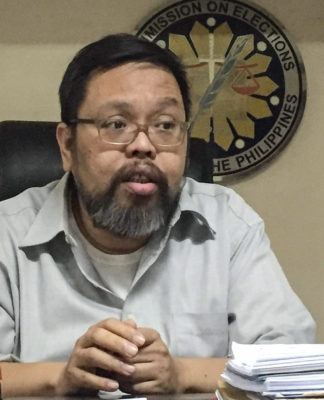 PRESIDENT Benigno Aquino III has expressed “disappointment” over reports that some college students had asked the filmmakers of the celebrated historical movie, “Heneral Luna,” why Apolinario Mabini is shown sitting in the entire movie, disclosing their ignorance of Philippine history since the “Brains of the Revolution” was a paralytic.
PRESIDENT Benigno Aquino III has expressed “disappointment” over reports that some college students had asked the filmmakers of the celebrated historical movie, “Heneral Luna,” why Apolinario Mabini is shown sitting in the entire movie, disclosing their ignorance of Philippine history since the “Brains of the Revolution” was a paralytic.
But the gross ignorance of history is merely the tip of the iceberg for the highly inefficient and ineffective Philippine education system.
In all other areas of education, especially sciences and mathematics, and even English language instruction and culture and the humanities, the Filipino student practically wears the dunce cap.
The education sector, despite historically being given the largest share of the national budget, remains a very problematic sector, one that somehow reflects the failures of the Philippine nation.
For next year, the proposed general appropriations act (GAA) will once again give the sector the biggest allocation—P367.1 billion—from the P2.6-trillion overall budget, largely to implement controversial K to 12 program.
Despite the big budget and the bright promise held out by education officials for the K to 12, many are pessimistic that the Department of Education (DepEd) won’t be able to foster quality education.
As if realizing that his observation on the ignorance of Filipino students about Mabini and Philippine history would be taken against his government and its failure to foster quality education, Aquino pointed out K to 12 had yet to be fully implemented.
In his defense, Education Secretary Armin Luistro said the lapse in history knowledge as disclosed in the Mabini incident should not reflect on the whole education system. He pleaded to check with curriculum supervisors and teachers if Philippine national heroes were being taught in classrooms.
It is bad enough that some students reach college without a clear understanding and appreciation of Philippine history; but it is worse when they had to rely on a movie to do the teaching.
Not that “Heneral Luna” is a bad movie. It is a good movie, perhaps a great one. But the fact that it nearly got booted out of theaters because its earnings weren’t enough for commercially minded cineplexes that had been pampered by stupid Hollywood movies featuring Batman, Spiderman and so-called superheroes wearing belts on the underwear, should indicate the poor cultural education and taste of Filipinos, education and taste acquired through 10 years of instruction from the graft-prone, incompetent and ultimately bankrupt system fostered across the generations by the DepEd.
Now that two more years have been added to the bankrupt system, can we expect relief and alleviation?
So it is unfair that students are shouldering all the blame for the lack of appreciation and knowledge of Philippine history.
If the President finds Filipino students disappointing, more so the government. The Philippine government should not expect to produce the best kind of students if it does so little to improve the quality of education.
Based on the K to 12 curriculum, lessons on the country’s national heroes will only be taught starting at grade three and learning competencies will be measured through the students’ ability to identify national heroes and their respective hometowns.
History lessons will resume in the sixth grade, where teachers will discuss the Spanish and American occupation as well as the Philippine revolution.
This kind of curriculum and approach do not foster a deeper understanding and appreciation of history. It only introduces lessons in a skin-deep level without humanizing and providing context.
In fact, Benito Legarda Jr., a Harvard-trained historian and a former deputy governor of the Central Bank of the Philippines, criticized the outline of Philippine history under the K to 12. The outline was published by Isagani Cruz, a retired professor of De la Lalle University, where Luistro was once president, in his column in the Philippine Star. Cruz is now an adviser to the DepEd on the K to 12.
In his critique, Legarda basically called the outline simplistic, the “premise shaky and the approach reactive.” He also noted “major omissions,” particularly the role of the friar religious orders in fighting colonialism and introducing education and civilization and developments during the long Spanish era that made the Philippines a nation and a highly developed one at that.
If the government is sincere in improving the country’s education system, it must focus on improving the curriculum and addressing the lack of facilities in schools. Longer school years do not necessarily guarantee quality education.
The President’s disappointment must transcend beyond mere emotion, he must also realize how frustrating it is for some students to study in poorly maintained public schools, which will be prolonged even more due to the K to 12 program.
And finally, students should not allow themselves to be limited by the government’s incapacity of improving the education system. As unfair as it may seem, the youth should take the burden of developing the quality of Philippine education, not only for themselves but also for future generations.
















